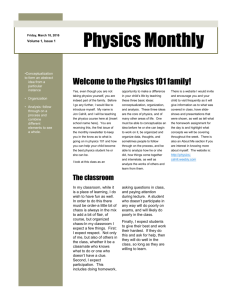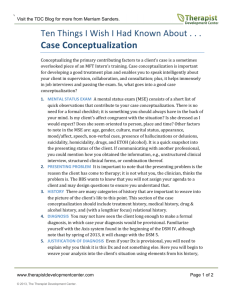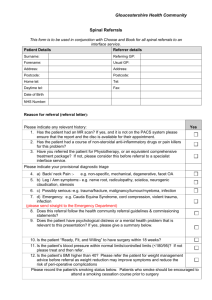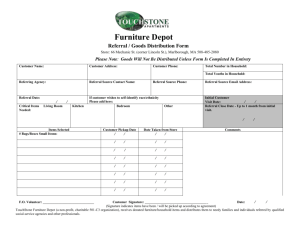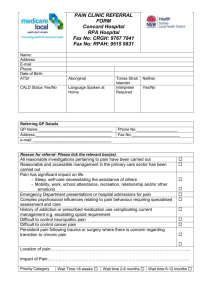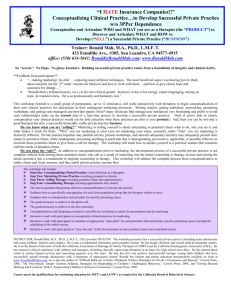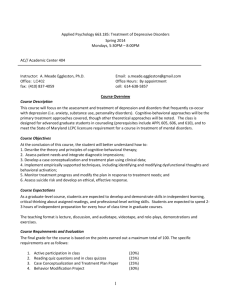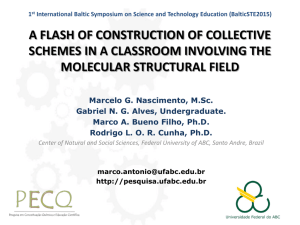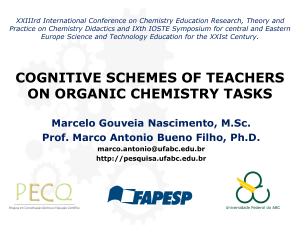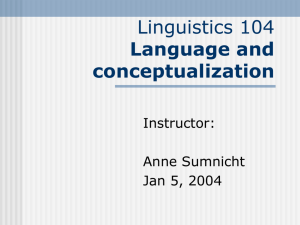Rubric for case study
advertisement
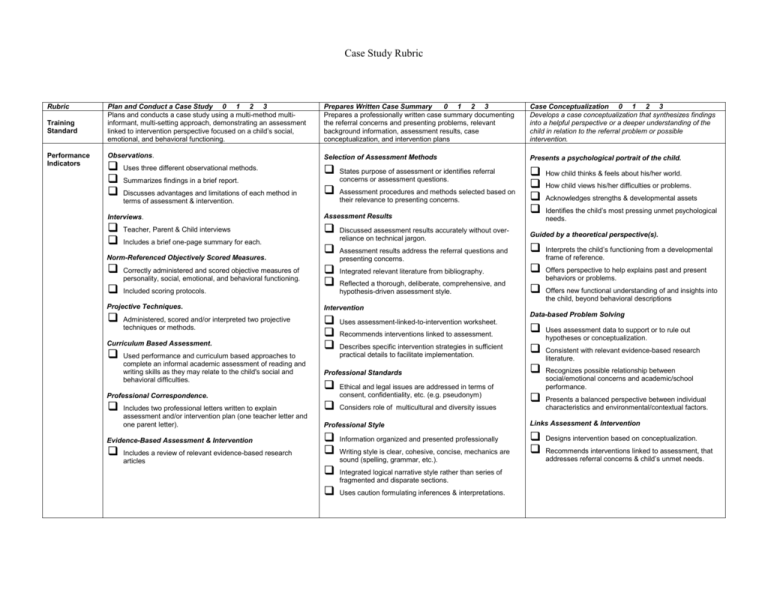
Case Study Rubric Rubric Training Standard Performance Indicators Plan and Conduct a Case Study 0 1 2 3 Plans and conducts a case study using a multi-method multiinformant, multi-setting approach, demonstrating an assessment linked to intervention perspective focused on a child’s social, emotional, and behavioral functioning. Prepares Written Case Summary 0 1 2 3 Prepares a professionally written case summary documenting the referral concerns and presenting problems, relevant background information, assessment results, case conceptualization, and intervention plans Case Conceptualization 0 1 2 3 Develops a case conceptualization that synthesizes findings into a helpful perspective or a deeper understanding of the child in relation to the referral problem or possible intervention. Observations. Selection of Assessment Methods Presents a psychological portrait of the child. Uses three different observational methods. Summarizes findings in a brief report. Discusses advantages and limitations of each method in terms of assessment & intervention. States purpose of assessment or identifies referral concerns or assessment questions. Assessment procedures and methods selected based on their relevance to presenting concerns. Interviews. Assessment Results Teacher, Parent & Child interviews Includes a brief one-page summary for each. Norm-Referenced Objectively Scored Measures. Correctly administered and scored objective measures of personality, social, emotional, and behavioral functioning. Included scoring protocols. Projective Techniques. Administered, scored and/or interpreted two projective techniques or methods. Curriculum Based Assessment. Used performance and curriculum based approaches to complete an informal academic assessment of reading and writing skills as they may relate to the child's social and behavioral difficulties. Professional Correspondence. Includes two professional letters written to explain assessment and/or intervention plan (one teacher letter and one parent letter). Evidence-Based Assessment & Intervention Includes a review of relevant evidence-based research articles Discussed assessment results accurately without overreliance on technical jargon. Assessment results address the referral questions and presenting concerns. How child thinks & feels about his/her world. How child views his/her difficulties or problems. Acknowledges strengths & developmental assets Identifies the child’s most pressing unmet psychological needs. Guided by a theoretical perspective(s). Integrated relevant literature from bibliography. Reflected a thorough, deliberate, comprehensive, and hypothesis-driven assessment style. Interprets the child’s functioning from a developmental frame of reference. Offers perspective to help explains past and present behaviors or problems. Offers new functional understanding of and insights into the child, beyond behavioral descriptions Intervention Data-based Problem Solving Uses assessment-linked-to-intervention worksheet. Recommends interventions linked to assessment. Describes specific intervention strategies in sufficient practical details to facilitate implementation. Professional Standards Ethical and legal issues are addressed in terms of consent, confidentiality, etc. (e.g. pseudonym) Considers role of multicultural and diversity issues Uses assessment data to support or to rule out hypotheses or conceptualization. Consistent with relevant evidence-based research literature. Recognizes possible relationship between social/emotional concerns and academic/school performance. Presents a balanced perspective between individual characteristics and environmental/contextual factors. Professional Style Links Assessment & Intervention Information organized and presented professionally Writing style is clear, cohesive, concise, mechanics are sound (spelling, grammar, etc.). Integrated logical narrative style rather than series of fragmented and disparate sections. Uses caution formulating inferences & interpretations. Designs intervention based on conceptualization. Recommends interventions linked to assessment, that addresses referral concerns & child’s unmet needs.
